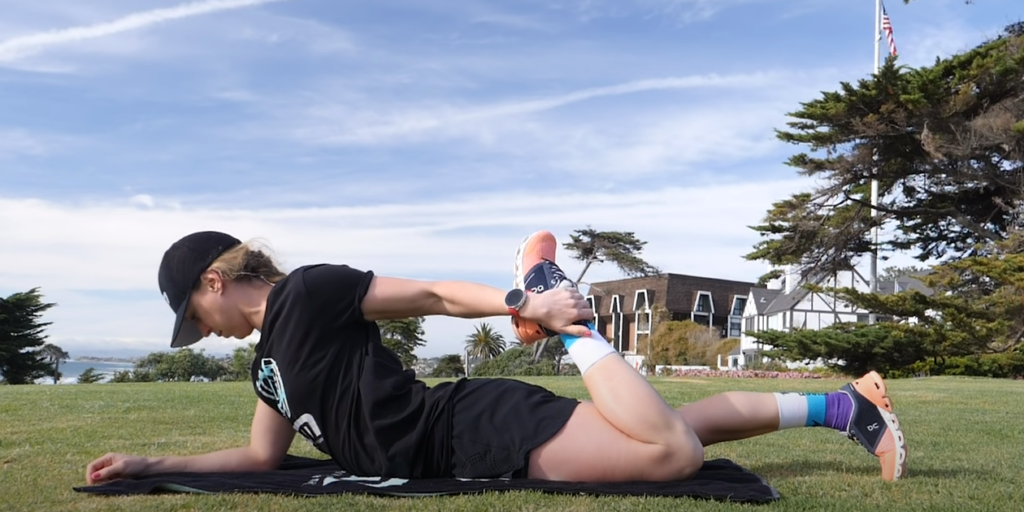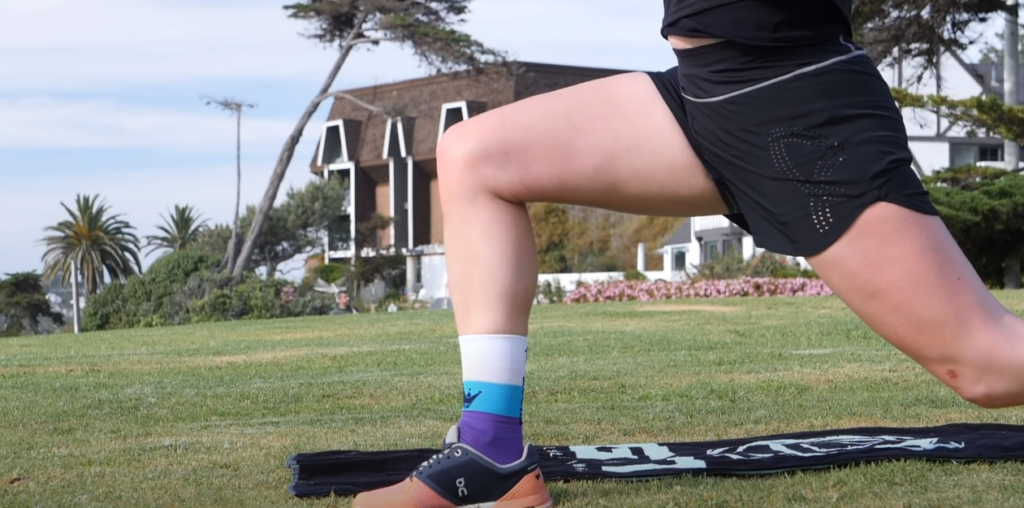Embarking on a long bike ride requires more than just the right gear and a map. One often overlooked yet crucial aspect is a proper warm-up routine. Just as a car needs time to warm up before a journey, your body deserves the same attention. In this article, we’ll delve into the best warm-up practices that will help you prepare physically and mentally for a successful long ride. So, before you hop on your bike, let’s explore how to get your body ready for the road ahead.
The Importance of Warming Up
When it comes to embarking on a long bike ride, a thorough warm-up is not just a routine step, but a critical aspect of preparing your body for the physical demands ahead. Warming up is a deliberate and gradual process that involves specific exercises and activities aimed at priming your body for optimal performance. . Here’s why warming up matters:
1. Enhanced Blood Flow
Warming up gradually elevates your heart rate and promotes increased blood circulation throughout your body. This has several advantages for cyclists gearing up for a long ride:
| Benefit | Explanation |
|---|---|
| Injury Prevention | Improved blood flow delivers essential oxygen and nutrients to muscles, tendons, and ligaments, reducing the risk of strains, tears, and other injuries. |
| Performance Boost | Efficient oxygen delivery enhances muscle function, leading to better performance and endurance during the ride. |
2. Muscle Elasticity
Engaging in gentle warm-up exercises plays a pivotal role in raising muscle temperature, rendering muscles more flexible and responsive. This mitigates the likelihood of muscle strains and pulls, ensuring a smoother biking experience:
| Benefit | Explanation |
|---|---|
| Enhanced Flexibility | Warmer muscles exhibit increased elasticity, allowing for a wider range of motion while cycling and reducing the chance of muscle-related issues. |
| Injury Risk Reduction | Flexible muscles are less prone to sudden contractions or overextensions that could result in painful injuries, making the warm-up a preventative measure. |
3. Mental Preparation

While the focus often lies on the physical aspect, warming up also aids in mentally transitioning into the upcoming physical activity. This psychological preparation can have a profound impact on your bike ride:
| Benefit | Explanation |
|---|---|
| Enhanced Focus | The warm-up period provides time to shift your mental focus from daily concerns to the upcoming ride, enhancing concentration and readiness. |
| Stress Reduction | Engaging in a structured warm-up routine triggers the release of endorphins, which help alleviate stress and create a positive mindset for the ride. |
4. Improved Range of Motion
Warming up effectively loosens joints and enhances overall joint mobility, which is of particular importance for cyclists whose bodies engage multiple muscle groups during a ride:
| Benefit | Explanation |
|---|---|
| Joint Flexibility | Proper warm-up routines ensure that joints are well-lubricated and ready for movement, reducing stiffness and promoting a smoother, more comfortable ride. |
| Enhanced Performance | Increased joint mobility allows for more efficient pedaling motions, optimizing power transfer and ultimately improving biking performance. |
Components of an Effective Warm-Up Routine

To ensure optimal performance and reduce the risk of injury during your cycling sessions, it’s essential to incorporate a well-structured warm-up routine. A comprehensive warm-up routine prepares your body both physically and mentally for the upcoming activity. Let’s delve into the components of an effective warm-up routine in detail:
1. Aerobic Warm-Up
| Duration | 5-10 minutes |
| Activity | Light aerobic exercises such as brisk walking or slow cycling. |
| Purpose | Gradually elevate your heart rate and increase blood flow to muscles. |
The aerobic warm-up phase is crucial for gradually increasing your heart rate and boosting blood flow to your muscles. Engaging in low-intensity cardiovascular exercises like brisk walking or easy cycling helps prime your cardiovascular system for the upcoming workout.
2. Dynamic Stretching
| Duration | 5-7 minutes |
| Activity | Dynamic stretches mimicking cycling movements. |
| Examples | Leg swings, hip circles, arm circles. |
| Purpose | Enhance range of motion, flexibility, and blood flow. |
Dynamic stretching involves actively moving your muscles through their full range of motion. This type of stretching is ideal for cycling warm-ups, as it replicates the motions you’ll perform while riding. Leg swings, hip circles, and arm circles are examples of dynamic stretches that prepare your muscles for the cycling movements ahead.
3. Joint Mobilization
| Duration | 3-5 minutes |
| Activity | Controlled joint rotations for major joints. |
| Joints | Ankles, knees, hips, shoulders. |
| Purpose | Improve joint mobility and fluidity. |
Joint mobilization exercises focus on increasing the range of motion in your joints. Perform controlled rotations for your ankles, knees, hips, and shoulders. This component of the warm-up routine enhances joint fluidity and ensures that your joints are prepared for the cycling motion.
4. Muscle Activation

Alt: image of Legs Performing Lunges
| Duration | 5-7 minutes |
| Activity | Muscle activation exercises like squats, lunges, glute bridges. |
| Target Muscles | Key muscles used in cycling – quadriceps, hamstrings, glutes. |
| Purpose | Activate and engage cycling-specific muscles. |
Muscle activation exercises are designed to activate and engage the specific muscles involved in cycling. Squats, lunges, and glute bridges are effective for activating the quadriceps, hamstrings, and glutes, which are essential for generating power during your ride.
5. Neuromuscular Activation
| Duration | 3-5 minutes |
| Activity | Short bursts of high-intensity exercises like sprints. |
| Purpose | Prepare the nervous system for exertion and speed. |
Neuromuscular activation involves high-intensity exercises that mimic the demands of cycling, such as short sprints. This segment of the warm-up routine primes your nervous system for the intensity and speed of your cycling session.
6. Mental Preparation
| Duration | 2-3 minutes |
| Activity | Deep breathing and visualization techniques. |
| Purpose | Focus the mind, reduce stress, enhance focus. |
Mental preparation is often overlooked but plays a significant role in performance. Spend a few minutes focusing on deep breathing and positive visualization. Envisioning a successful and enjoyable ride can help reduce pre-ride jitters and enhance your overall cycling experience.
Conclusion
Embarking on a long bike ride is a thrilling adventure that demands physical and mental preparation. A proper warm-up routine sets the foundation for a successful ride by enhancing blood flow, boosting muscle elasticity, and sharpening mental focus. Remember to include aerobic exercises, dynamic stretching, joint mobilization, muscle activation, neuromuscular activation, and mental preparation in your warm-up routine. Don’t underestimate the power of a well-rounded warm-up; it’s the key to a safe, enjoyable, and performance-driven long ride.
For better understanding, check out this video to see the warm-up routine in action. So, before you pedal into the horizon, give your body the warm-up it deserves and make your journey unforgettable.
FAQ
It’s not advisable. A proper warm-up is crucial to prevent injuries and ensure optimal performance. Even a condensed warm-up is better than none.
Mental preparation reduces anxiety, improves focus, and sets a positive tone for your ride. Visualizing success can boost your confidence and overall experience.
Static stretches are better suited for post-ride recovery. Dynamic stretches are more effective for warming up as they improve blood flow and flexibility.
Absolutely. Stationary cycling is an excellent choice for an aerobic warm-up, especially if you’re short on outdoor space or the weather isn’t ideal.
A warm-up increases blood flow to muscles, making them more pliable and less prone to strains. It also improves joint mobility and helps your body adjust to sudden movements.
